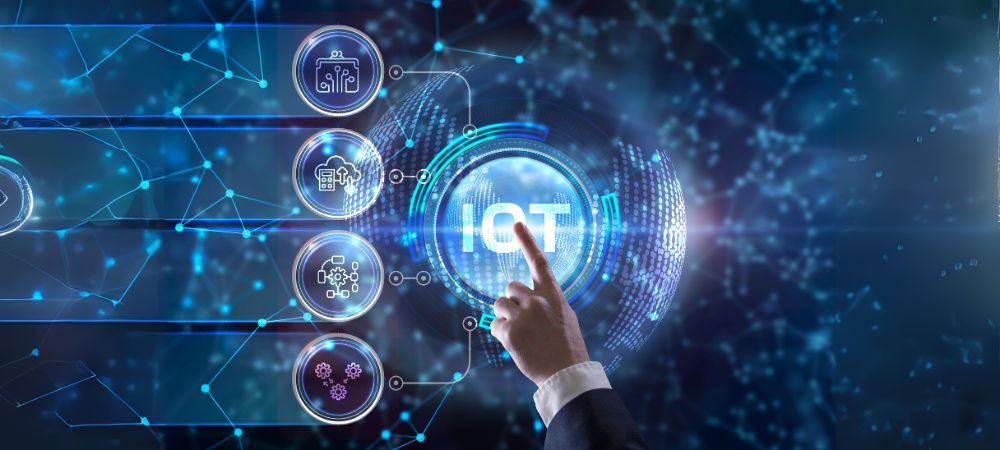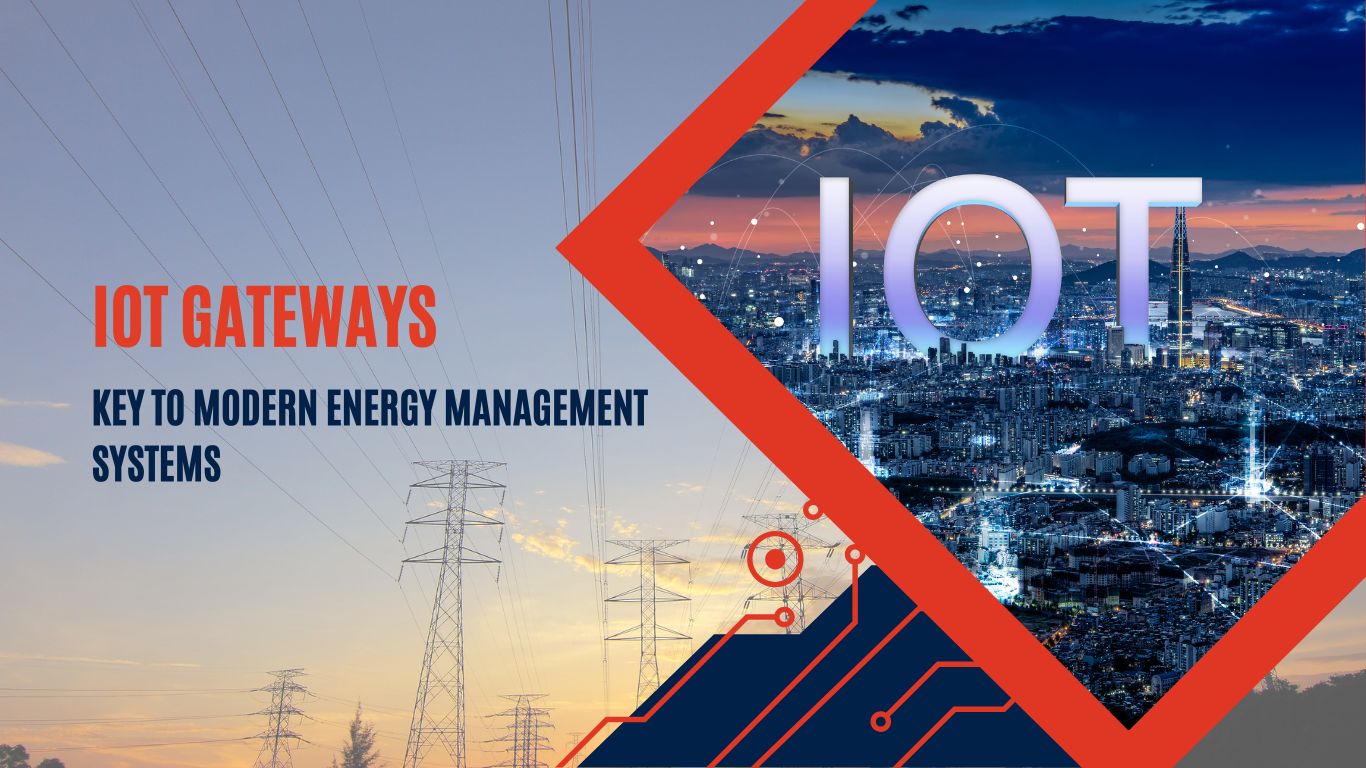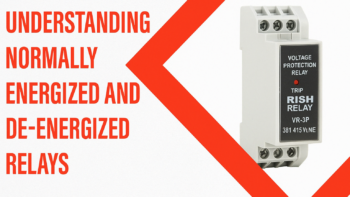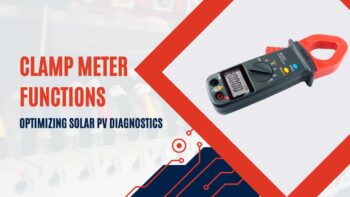What Are IoT Gateways? Their Crucial Role in Modern Energy Management Systems
Quick Summary
- Learn how IoT gateways empower modern energy management systems by facilitating real-time data flow, device interoperability, edge analytics, and enhanced security.
- Learn why they’re essential for smarter, more efficient energy use.
The global energy sector is undergoing a significant digital transformation. With growing demands for sustainability and efficiency, the industry is turning towards the Internet of Things. At the core of this shift lie the IoT Gateways, crucial but sometimes underappreciated components of the IoT.
They serve as the communication bridge between on-site sensors and cloud-based analytics platforms. In modern energy management systems (EMS), where the ability to collect, process, and act on data in real-time is crucial, these gateways are indispensable.
This article explores what IoT Gateways are, how they function, and what makes them crucial to modern energy management.
What Are IoT Gateways?
A Bridge Between the Digital World and the Physical World

An IoT Gateway is a device or software layer that connects various types of meters, sensors, and controllers to the internet or a central platform. It gathers data from various sources, translates it into a usable format, and forwards it to where it’s needed.
In simple terms, IoT gateways act as a security guard or traffic controller of your IoT network. It ensures that data from all devices flows efficiently and securely, regardless of the communication protocol used by those devices.
Key Features
An effective gateway iot supports multiple core tasks:
● Protocol conversion: Translates between different communication standards (e.g., Modbus to MQTT).
● Edge processing: Performs local analytics or decision-making to reduce latency.
● Security: Acts as a firewall and encryption point.
● Device management: Provides control over connected endpoints.
● Data filtering reduces network load by pre-processing or filtering unnecessary data.
Common IoT Communication Protocols
| Protocol | Use Case | Key Feature |
| Modbus (RTU/TCP) | Industrial automation | Simple, robust |
| CAN bus | Automotive, robotics | Real-time, low latency |
| Zigbee | Home automation, low-power devices | Mesh networking |
| Z-Wave | Smart home | Low power, secure |
| Bluetooth/BLE | Wearables, consumer IoT | Short range, energy-efficient |
| LoRa/LoRaWAN | Remote sensors | Long-range, low-bandwidth |
| MQTT-SN | Sensor networks | MQTT for non-TCP/IP devices |
Typical Interfaces Found on IoT Gateways
IoT gateways can have both physical and software/network interfaces.
Physical IoT Interfaces
These Interfaces allow physical device connections. Examples of physical IoT interfaces are:
- Ethernet (RJ45) – Reliable LAN connectivity
- Wi-Fi – Wireless LAN access
- RS-232 / RS-485 – Serial communication (common in legacy devices)
- USB – Peripheral connectivity
- GPIO / SPI / I2C – Direct sensor/microcontroller interfaces
- CAN – Automotive/machine control communication
- Cellular (3G/4G/5G) – Remote deployments
- LoRa/Wi-SUN/Zigbee – Wireless mesh or LPWAN support
Network IoT Interfaces
These support device communication and data transfer virtually. Examples of these are:
- TCP/IP Stack
- VPN (IPSec/OpenVPN) – Secure tunneling to cloud or private networks
- Modbus-TCP drivers
- OPC UA clients/servers
- MQTT brokers/clients
- RESTful APIs for integration with cloud services
The Role of IoT Gateways in Energy Management Systems
What is an EMS?
Before looking at what the role of a gateway iot is in an Energy Management System, it’s important to understand what an Energy Management System is. Energy Management Systems are used to monitor, control, and optimize energy usage across buildings, campuses, and industrial facilities.
They rely on accurate, real-time data to function effectively, something only possible when all devices within the system are interconnected and communicating smoothly.
Role of IoT Gateways
Most modern EMS platforms require connectivity to a diverse ecosystem of devices. Each device in the system may use different data formats or communication protocols, and this is where the IoT gateway comes in, as it enables these systems to work together.
Practical Considerations for Deployment
Choosing the Right Hardware
The hardware you use is very important, as you always want to have hardware suited to what you want to achieve with your system. It’s important to get:
● A high-quality industrial IoT gateway.
● Support for relevant protocols
● Adequate processing power for edge applications
● Sufficient memory and storage
● High-quality Energy Meters
It’s also important to consider where you are when choosing hardware. If you are in someplace that has a harsh climate, choosing Industrial IoT Gateways becomes even more important as they are better protected against bad external environments.
Software Compatibility and Network Architecture
You want to get a gateway that can integrate with your existing EMS cleanly. This will save you a lot of time and trouble.
Alongside that, the design of your network architecture will also depend on your facility layout. You can go for:
● Centralized layout
● Decentralized layout
● Hierarchical layout
Your choice will ultimately depend on your own bandwidth needs, latency requirements, and redundancy goals.
Real-World Examples of IoT Gateways in Use
- Smart Office Buildings
IoT Gateways gather data from lighting systems, smart thermostats, motion detectors, and window blinds. This data helps EMS platforms adjust lighting and HVAC settings in real time, resulting in substantial energy savings and improved occupant comfort.
- Manufacturing Plants
In industrial settings, gateways monitor machine performance, electrical loads, and production cycles. This information helps optimize operations and reduce energy-intensive peak loads.
- Utility Providers and Smart Grids
Utilities deploy ioT gateways to aggregate data from thousands of smart meters and distributed energy resources (DERs). This supports grid stability, outage detection, and real-time energy trading.
- Data Centers
Data centers use gateways to monitor power usage effectiveness (PUE), server heat output, and cooling loads. By analyzing this data locally, gateways help reduce energy waste without compromising performance.
Choosing the Right IoT for Yourself

Your whole system will rely on the quality and suitability of your IoT, so it’s important to always get a high quality IoT that perfectly suits your system. Here are some key considerations you should keep in mind when choosing an IoT:
● Does it support the protocols your devices use?
● Can it process data at the edge?
● Is it secure enough for critical infrastructure?
● Will it integrate with your EMS and cloud platforms?
● Does the vendor offer long-term support?
Good ioT gateways that fit your system can also save you a lot of money in the long run, as they are often more efficient and get more out of all your components. You can check out our ‘Role of IoT in Enhancing Electrical Component Efficiency‘ guide for more information on that.
Lastly, when purchasing an IoT Gateway, it’s always best to obtain it from trusted sellers. GoSwitchgear is a great option for anyone seeking electrical components, such as ioT gateways, in the UAE. They offer a wide range of IoT gateways, allowing you to select one that suits your specific needs.
Conclusion
IoT gateways are a foundational piece of the smart energy puzzle. Though often working behind the scenes, they ensure that data flows securely, reliably, and efficiently between the physical world and the digital platforms that manage it.
For any organization serious about energy optimization, deploying the right gateway infrastructure is not just a technical decision—it’s a strategic one.
As we move into a more interconnected and data-driven future, the role of IoT Gateways in energy management systems will only continue to grow. If you are in need of an IoT gateway for your EMS, make sure you check out the wide range of IoT gateways that Go Switchgear has to offer.
FAQs
Q: What is the primary role of an IoT gateway in an energy management system (EMS)?
A.The gateway acts as a bridge between the various field devices and the central EMS. It will collect data from various sources and translate it to a usable format.
Q: How do IoT gateways help reduce energy consumption?
A.IoT gateways enable real-time monitoring and control of energy-consuming systems such as lighting, HVAC, and machinery. By processing data locally (edge computing), they can detect inefficiencies, trigger automated responses, and support demand-response strategies—all of which contribute to lower energy usage and cost savings.
Q: Are IoT gateways secure for critical infrastructure like power systems?
A.Yes, most modern IoT gateways come with robust security features that make them very secure for critical infrastructure. They act as a crucial security barrier that helps keep your important information secure.










Leave a Reply